If I Heard Space Music I Would Probably Rocket

If I heard space music I would probably rocket
More Posts from Intergalacticnerd and Others

Astronauts play ping pong in space using water and hydrophobic padels
[video]
Views of Pluto
10 Images to Celebrate the Historic Exploration of the Pluto System
One year ago, our New Horizons mission made history by exploring Pluto and its moons – giving humankind our first close-up look at this fascinating world on the frontier of our solar system.

Since those amazing days in July 2015, the New Horizons spacecraft has transmitted numerous images and many other kinds of data home for scientists and the public alike to study, analyze, and just plain love. From Pluto’s iconic “heart” and sweeping ice-mountain vistas to its flowing glaciers and dramatic blue skies, it’s hard to pick just one favorite picture. So the mission team has picked 10 – and in no special order, placed them here.
Click the titles for more information about each image. You’ve seen nine of them before, and the team added a 10th favorite, also sure to become one of New Horizons’ “greatest hits.”
Vast Glacial Flows

In the northern region of Pluto’s Sputnik Planum, swirl-shaped patterns of light and dark suggest that a surface layer of exotic ices has flowed around obstacles and into depressions, much like glaciers on Earth.
Jagged Ice Shorelines and Snowy Pits

This dramatic image from our New Horizons spacecraft shows the dark, rugged highlands known as Krun Macula (lower right), which border a section of Pluto’s icy plains.
Blue Skies

Pluto’s haze layer shows its blue color in this picture taken by the New Horizons Ralph/Multispectral Visible Imaging Camera (MVIC). The high-altitude haze is thought to be similar in nature to that seen at Saturn’s moon Titan.
Charon Becomes a Real World

At half the diameter of Pluto, Charon is the largest satellite relative to its planet in the solar system. Many New Horizons scientists expected Charon to be a monotonous, crater-battered world; instead, they’re finding a landscape covered with mountains, canyons, landslides, surface-color variations and more.
The Vistas of Pluto

Our New Horizons spacecraft looked back toward the sun and captured this near-sunset view of the rugged, icy mountains and flat ice plains extending to Pluto’s horizon. The backlighting highlights over a dozen layers of haze in Pluto’s tenuous but distended atmosphere.
The Dynamic Duo: Pluto and Charon in Enhanced Color

The color and brightness of both Pluto and Charon have been processed identically to allow direct comparison of their surface properties, and to highlight the similarity between Charon’s polar red terrain and Pluto’s equatorial red terrain. Pluto and Charon are shown with approximately correct relative sizes, but their true separation is not to scale.
Strange Snakeskin Terrain

A moment’s study reveals surface features that appear to be texturally ‘snakeskin’-like, owing to their north-south oriented scaly raised relief. A digital elevation model created by the New Horizons’ geology shows that these bladed structures have typical relief of about 550 yards (500 meters). Their relative spacing of about 3-5 kilometers makes them some of the steepest features seen on Pluto.
Pluto’s Heart

This view is dominated by the large, bright feature informally named the “heart,” which measures approximately 1,000 miles (1,600 kilometers) across. The heart borders darker equatorial terrains, and the mottled terrain to its east (right) are complex. However, even at this resolution, much of the heart’s interior appears remarkably featureless—possibly a sign of ongoing geologic processes.
Far Away Snow-Capped Mountains

One of Pluto’s most identifiable features, Cthulhu (pronounced kuh-THU-lu) stretches nearly halfway around Pluto’s equator, starting from the west of the great nitrogen ice plains known as Sputnik Planum. Measuring approximately 1,850 miles (3,000 kilometers) long and 450 miles (750 kilometers) wide, Cthulhu is a bit larger than the state of Alaska.
Colorful Composition Maps of Pluto

The powerful instruments on New Horizons not only gave scientists insight on what Pluto looked like, their data also confirmed (or, in many cases, dispelled) their ideas of what Pluto was made of. These compositional maps – assembled using data from the Linear Etalon Imaging Spectral Array (LEISA) component of the Ralph instrument – indicate the regions rich in ices of methane (CH4), nitrogen (N2) and carbon monoxide (CO), and, of course, water ice (H2O).
Make sure to follow us on Tumblr for your regular dose of space: http://nasa.tumblr.com
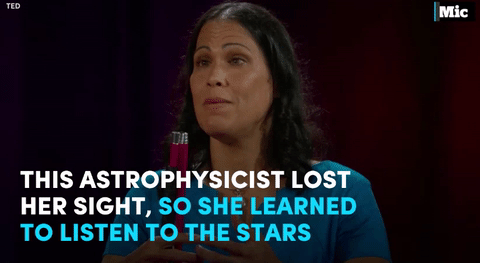


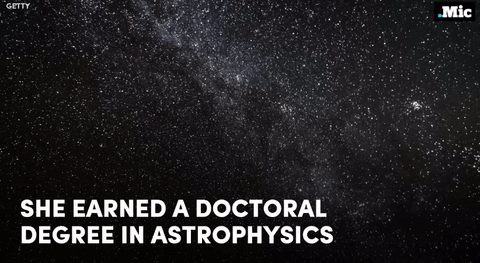







follow @the-future-now
How Well Do you Know Neptune?

Dark, cold and whipped by supersonic winds, Neptune is the last of the hydrogen and helium gas giants in our solar system. More than 30 times as far from the sun as Earth, the planet takes almost 165 Earth years to orbit our sun! In fact, in 2011, Neptune completed its first orbit since its discovery in 1846.

Here are a few things you might not know about the windiest planet:
If the sun were as tell as a typical front door, the Earth would be the size of a nickel and Neptune would be about as big as a baseball.
Neptune orbits our sun, a star. Neptune is the eighth planet from the sun at a distance of about 4.5 billion km (2.8 billion miles) or 30.07 AU.
One day on Neptune takes about 16 hours (the time it takes for Neptune to rotate or spin once)
Neptune makes a complete orbit around the sun (a year in Neptunian time) in about 165 Earth years (60,190 Earth days)
Neptune has six rings
Voyager 2 is the only spacecraft to have visited Neptune
Neptune has 13 moons. They are named after various sea gods and nymphs in Greek mythology
Did you know that Neptune has storms?

Similar to Jupiter, Neptune has storms that create gigantic spots in its atmosphere…well, it did. When Voyager 2 flew past Neptune in 1989, it tracked and imaged the “Great Dark Spot” — a storm larger than the entire Earth! When the Hubble Space Telescope imaged Neptune the spot had disappeared, only to be replaced with two smaller storms, which in turn also disappeared.
Make sure to follow us on Tumblr for your regular dose of space: http://nasa.tumblr.com

Picture of the Day: Messier 9 Star Cluster
NASA’s Hubble Space Telescope has taken this incredible picture of Messier 9, a globular star cluster located near the center of our galaxy. The cluster, located some 25,000 light years away, is too faint to be seen with the naked eye, but Hubble has captured more than 250,000 individual stars there. Globular clusters are believed to have emerged when the galaxy was quite young, and the stars that make up Messier 9 are calculated to be around twice as old as our sun.

Black Holes are not so Black (Part 3) - Gravitational Waves
The existence of Gravitational Waves have been confirmed. But you probably have heard that. In this post, we will break down this profound discovery into comprehend-able chunks.
This is going to be a amazing journey. Ready ?
Redefining Gravity
When we usually talk of Gravitation we are bound to think like Newton, where objects are assumed to exerting a force upon each other.
Like imaginary arrows of force in space. But this picture, although good for high school crumbled, with the advent of Einstein’s theory of Relativity.

What is the Space-Time Fabric?
Think of space-time fabric as an actual cloth of fabric. ( An analogy )
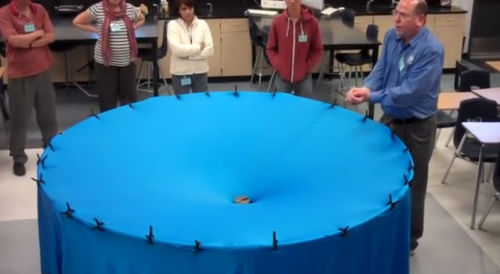
When you place an object on the fabric, the cloth curves. This is exactly what happens in the solar system as well.

The sun with such a huge mass bends the space-time fabric. And the earth and all the planets are kept in orbit by following this curvature that has been made by the sun.
Attributing to the various masses of objects, the way they bend this fabric also varies.
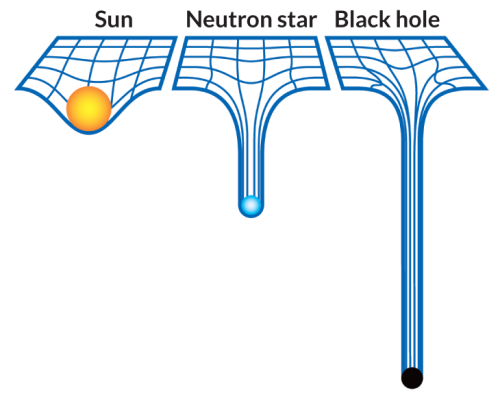
What are Gravitational Waves?
If you drop an object in a medium such as water, they produce ripples that propagate as waves through the medium.

Similarly, Gravitational waves are ripples in space-time fabric produced when you drag heavy objects through space time.
And the nature of these waves is that they don’t require a medium to propagate.
How do you make one?
Everything with mass/energy can create these waves.

Source
Two persons dancing around each other in space too can create gravitational waves. But the waves would be extremely faint.
You need something big and massive accelerating through space-time in order to even detect them.

And orbiting binary stars/black holes are valuable in this retrospect.
How can you detect them?
Let’s turn to the problem to detecting them assuming you do find binary stars/black-holes in the wondrous space to suite your needs.
Well, for starters you cannot use rocks/ rulers to measure them because as the space expands and contracts, so do the rocks. ( the distances will remain same in both the cases )

Here’s where the high school fact that the speed of Light is a constant no matter what plays an important and pivotal role.
If the space expands, the time taken for light to reach from A to B would be longer. And if it contracts, the time taken for it to reach from A to B would be smaller.

PC: PHDComics
By allowing the light waves from the contraction and expansion to interfere with each other, such as done in any interferometry experiment we can detect the expansion or contraction. Voila!
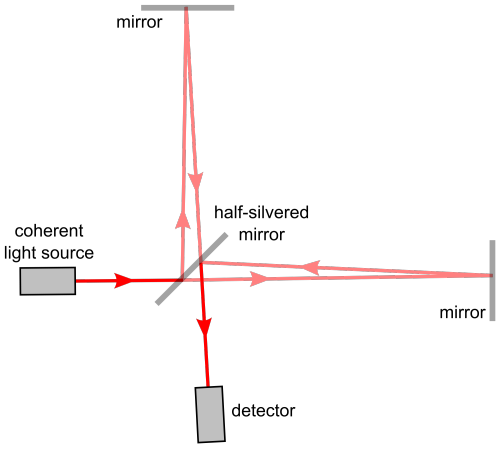
And this is exactly what they did! ( on a macroscopic level ) at LIGO (Laser Interferometer Gravitational-Wave Observatory)
14 September 2015

Two Black Holes with masses of 29 and 36 solar masses merged together some 1.3 Billion light years away.
Two Black Holes colliding is the header animation of the ‘Black Holes are not so Black Series’, in case if you haven’t noticed.

The merger of these two black holes results in the emission of energy equivalent to 3 solar masses as Gravitational Waves.
This signal was seen by both LIGO detectors, in Livingston and Hanford, with a time difference of 7 milliseconds.
And with the measurement of this time difference, physicists have pronounced the existence of Gravitational Waves.
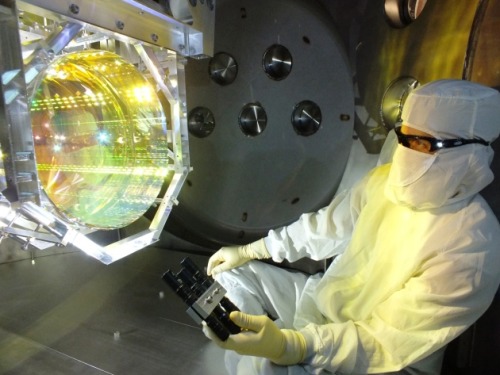
Source
All this is most certainly easily said than done and requires meticulous and extensive research, not to mention highly sensitive instruments.
Had they not have measured this time difference, we might have had to wait for the merger for more massive black holes to collide and maybe even build more sensitive instruments to detect these waves.
And Einstein predicted this a 100 years back!

Mind Blown!
Note: Hope you are able to understand and appreciate the profundity of the discovery done by mankind.
** All animations used here are merely for Educational purposes. If you have any issues, please write to us at : 153armstrong@gmail.com
By now you’ve probably heard the news that gravitational waves have been directly observed for the first time ever. Are you excited?

Our friends at PBS Space Time are pretty excited about it too, and they’ve put together an awesome video explaining the physics behind this discovery and why it’s so important.

A photo of Saturn. Took by Cassini with COISS on May 30, 2008 at 11:52:37. Detail page on OPUS database.
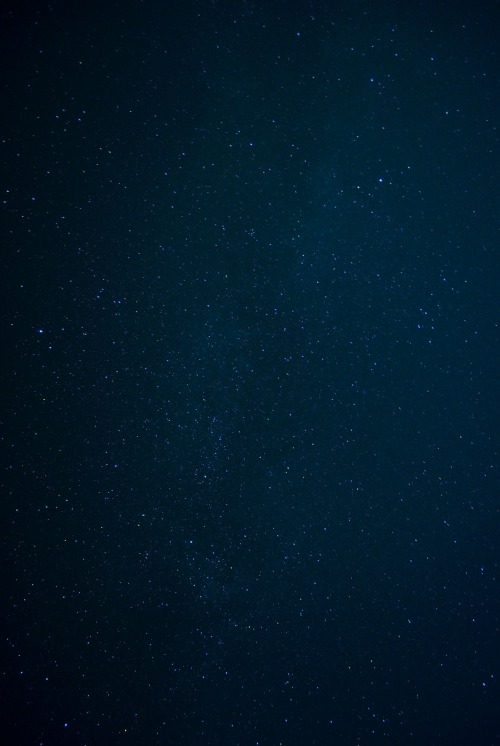

The Belt of Venus is a pink glowing arch seen across the sky when the shadow of the Earth’s translucent atmosphere casts a shadow back upon itself.
-
 cyber-punk-rock reblogged this · 1 month ago
cyber-punk-rock reblogged this · 1 month ago -
 nyxkky reblogged this · 3 years ago
nyxkky reblogged this · 3 years ago -
 nyxkky liked this · 3 years ago
nyxkky liked this · 3 years ago -
 uroutofshrimp liked this · 4 years ago
uroutofshrimp liked this · 4 years ago -
 galacticlioness liked this · 4 years ago
galacticlioness liked this · 4 years ago -
 silviaelric reblogged this · 4 years ago
silviaelric reblogged this · 4 years ago -
 silviaelric liked this · 4 years ago
silviaelric liked this · 4 years ago -
 hopefully-vibe liked this · 4 years ago
hopefully-vibe liked this · 4 years ago -
 the-smell-of-fuuurl reblogged this · 4 years ago
the-smell-of-fuuurl reblogged this · 4 years ago -
 the-smell-of-fuuurl liked this · 4 years ago
the-smell-of-fuuurl liked this · 4 years ago -
 alexisapossiblepenname liked this · 4 years ago
alexisapossiblepenname liked this · 4 years ago -
 b1llyth3k1d1001 liked this · 5 years ago
b1llyth3k1d1001 liked this · 5 years ago -
 malak464-blog liked this · 5 years ago
malak464-blog liked this · 5 years ago -
 needlesnknives reblogged this · 5 years ago
needlesnknives reblogged this · 5 years ago -
 saanamirzaie liked this · 5 years ago
saanamirzaie liked this · 5 years ago -
 i-c-stars reblogged this · 5 years ago
i-c-stars reblogged this · 5 years ago -
 i-c-stars liked this · 5 years ago
i-c-stars liked this · 5 years ago -
 kittycat1810 liked this · 5 years ago
kittycat1810 liked this · 5 years ago -
 frangotino liked this · 5 years ago
frangotino liked this · 5 years ago -
 somayokosworld liked this · 5 years ago
somayokosworld liked this · 5 years ago -
 loveholic198 reblogged this · 5 years ago
loveholic198 reblogged this · 5 years ago -
 feed-the-roses liked this · 5 years ago
feed-the-roses liked this · 5 years ago -
 knockedlooses liked this · 5 years ago
knockedlooses liked this · 5 years ago -
 canadianshits reblogged this · 5 years ago
canadianshits reblogged this · 5 years ago -
 donayen reblogged this · 5 years ago
donayen reblogged this · 5 years ago -
 mxsquirrels reblogged this · 5 years ago
mxsquirrels reblogged this · 5 years ago -
 mxsquirrels liked this · 5 years ago
mxsquirrels liked this · 5 years ago -
 hailtheferine liked this · 5 years ago
hailtheferine liked this · 5 years ago -
 jayberwalkies liked this · 5 years ago
jayberwalkies liked this · 5 years ago -
 bravo-four-seal-team liked this · 5 years ago
bravo-four-seal-team liked this · 5 years ago -
 bobbobis reblogged this · 5 years ago
bobbobis reblogged this · 5 years ago -
 bobbobis liked this · 5 years ago
bobbobis liked this · 5 years ago
"Astronomy compels the soul to look upwards and leads us from this world to another." - Plato
147 posts